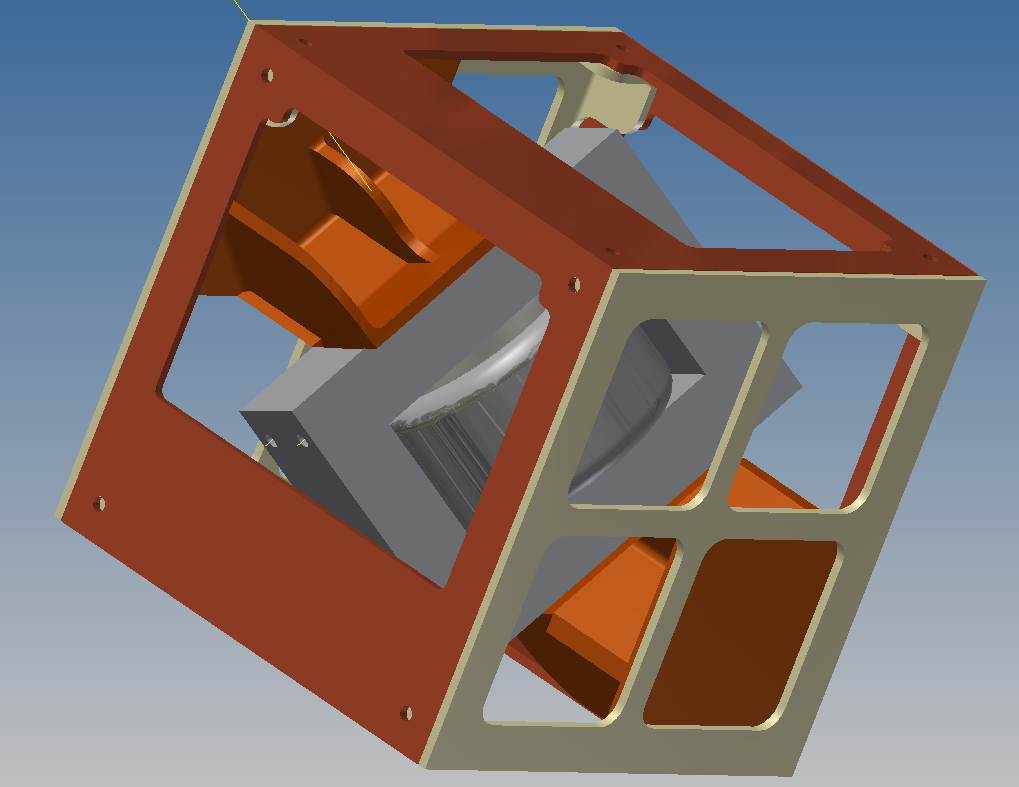Česká verze níže…
This post documents a fun demonstration experiment made for Maker Faire Prague 2021. Somewhere in our big faculty cellar we found an unused spare part of a flywheel intended probably for Mig-21 fighter jet attitude indicator. It looked as a very precisely made piece of engineering, so it would very inappropriate to throw it away, instead we made it spin…
It took some effort but the result demonstrates nicely the effects of a gyroscopic force. …and of course, it is fun to play with it…
Below is the text spoken in the video by “Justin” from ttsmp3.com
Hi, have you ever played with a spinning top? It could maybe look somehow like this… But how about an electrically powered one? You take a flywheel from an attitude indicator, formerly known as the gyro horizon or artificial horizon, you can see it in action at the end of the video. Actually, our unit is an original spare part probably for MIG-21 Soviet fighter jet. It is a very precisely balanced asynchronous motor with a high rotating mass which spins approximately at eighteen thousand revolutions per minute. It needs aircraft’s three phase power bus which is 36 Volts at 400 Hz to make it rotate. So, we put together two Lithium-ion batteries, a small step-up DCDC converter module and a BLDC motor controller development kit. And programmed it to generate the three-phase power network by a sinusoidal modulation of PWM… And with all this, you can make a cube to stand on its corner. It is just a pure mechanical stabilization by a gyroscopic force which tends to keep its axis of rotation stable. In our case the axis of rotation is aligned with a body diagonal of the cube.
Here you can see the very same flywheel embedded in the three gimbals system with a bunch of sensors and actuators and other electromechanical stuff. Altogether it helps the pilot to orient the aircraft properly.
Česká verze (překlad anglického popisu z videa) /description in czech/
Ahoj, hráli jste si někdy s káčou? Mohlo by to vypadat nějak takto … Ale co takhle káča elektricky poháněná? Vezmeme setrvačník z indikátoru polohy, dříve známého jako gyroskopický nebo umělý horizont – můžete jej vidět v akci na konci videa. Ve skutečnosti je náš setrvačník originálním náhradním dílem pravděpodobně pro sovětskou stíhačku MIG-21. Jedná se o velmi přesně vyvážený asynchronní motor s velkou rotující hmotou, který se otáčí rychlostí přibližně osmnácti tisíc otáček za minutu. K otáčení potřebuje třífázovou napájecí sběrnici letadla, která má 36 voltů při 400 Hz. Dali jsme tedy dohromady dvě lithium-iontové baterie, malý modul zvyšujícího DC/DC převodníku a vývojovou sadu pro řízení BLDC motoru. A naprogramovali ho tak, aby simuloval třífázovou napájecí síť sinusovou modulací PWM … A s tím vším můžete vytvořit krychli, která bude stát na svém rohu. Čistě jen pomocí mechanické stabilizace gyroskopickou silou, která má tendenci udržovat osu otáčení stabilní. V našem případě je osa otáčení zarovnána s tělesovou úhlopříčkou krychle. Na konci videa můžete vidět stejný setrvačník zabudovaný do systému tří kardanových závěsů se spoustou senzorů a akčních členů a dalších elektromechanických věcí. Celkově to pomáhá pilotovi správně orientovat letadlo při letu.
Material used – flywheel from USSR, DCDC step-up module 3-40V/3A, STEVAL-ESC001V1 – BLDC motor controller from ST Microelectronics, 18650 Li-ion accumulators, a bit of PLA 3D printing material, a bit of machined aluminum and couple of screws, wires and so on…
Few pictures
3D model of the device… well, not perfect, one could save couple of screws with a better and more precise design, but remember, it was made just for fun…

Final device

Actual flywheel used in the inertial cube. The arrow points to small holes drilled in the rotating mass to balance it precisely…

The inner part of aircraft’s attitude indicator where the same flywheel is used – the arrow points to its position… (you can see it in operation at the end of the video)

